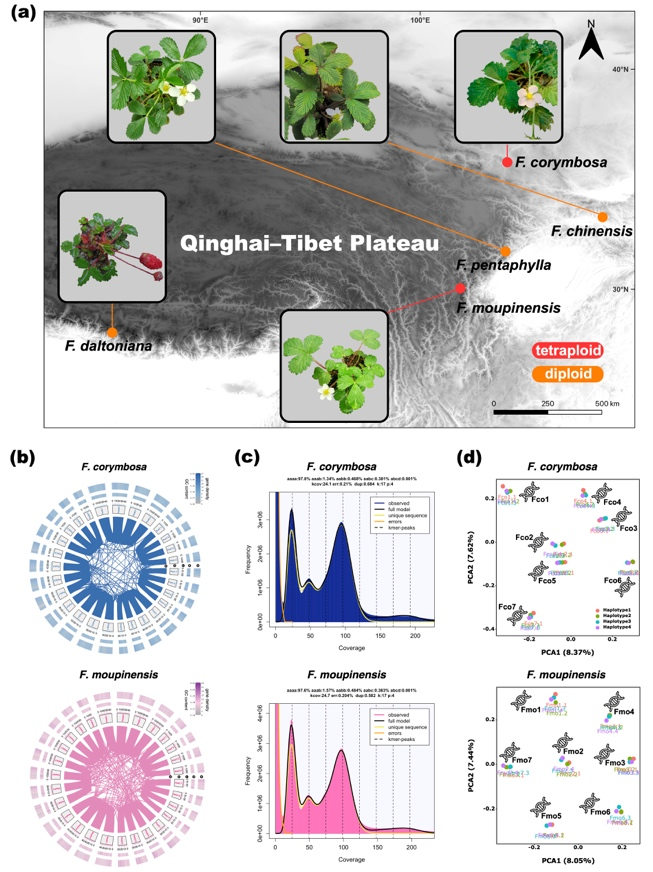Recently, an international cooperation team led by Professor Li Junmin from our university published a research article titled “Genomic Data Provides Insights into the Evolutionary History and Adaptive Differentiation of Two Tetraploid Strawberries” in the renowned journal Horticulture Research (a top-tier journal of the Chinese Academy of Sciences, with a five-year impact factor of 8.2, selected for the Excellence Action Plan of Chinese Science Journals). Associate Professor Lin Hanyang is the first author of the paper, and Professor Li Junmin is the corresponding author, with TU as the first affiliation.
The evolutionary patterns of niches and genetic backgrounds between polyploid plants and their diploid ancestors have been a long-term focus of the ecological field. This paper took Fragaria plants of the Rosaceae family as the research subject, assembled the chromosome-level whole genomes of five wild strawberry species including F. corymbosa, and focused on two unique tetraploid species in China, namely F. corymbosa and F. moupinensis, for related research. The whole genome data showed that the diploid Chinese strawberry is the most likely ancestor of the tetraploid F. corymbosa, while the ancestors of the tetraploid F. moupinensis might be unsampled Chinese strawberry populations or extinct related species. At the same time, there is extensive gene introgression among diploid strawberry species. Combining transcriptomic data, the study found that compared to their diploid ancestors, the tetraploid species show gene family expansion and increased transcription levels in genes related to UV radiation and DNA repair, while they exhibit gene family contraction and decreased transcription levels in genes related to various stress responses, providing important molecular genetics insights into this hot issue.

This research was supported by the National Natural Science Foundation of China (NSFC) and the Sino-American Biodiversity Program of the National Science Foundation (NSF) of the United States. Professors including Tia-Lynn Ashman from the University of Pittsburgh, Aaron Liston from Oregon State University, and Dong Ming from Hangzhou Normal University participated in the guidance of this research.
Full text link:https://doi.org/10.1093/hr/uhae194